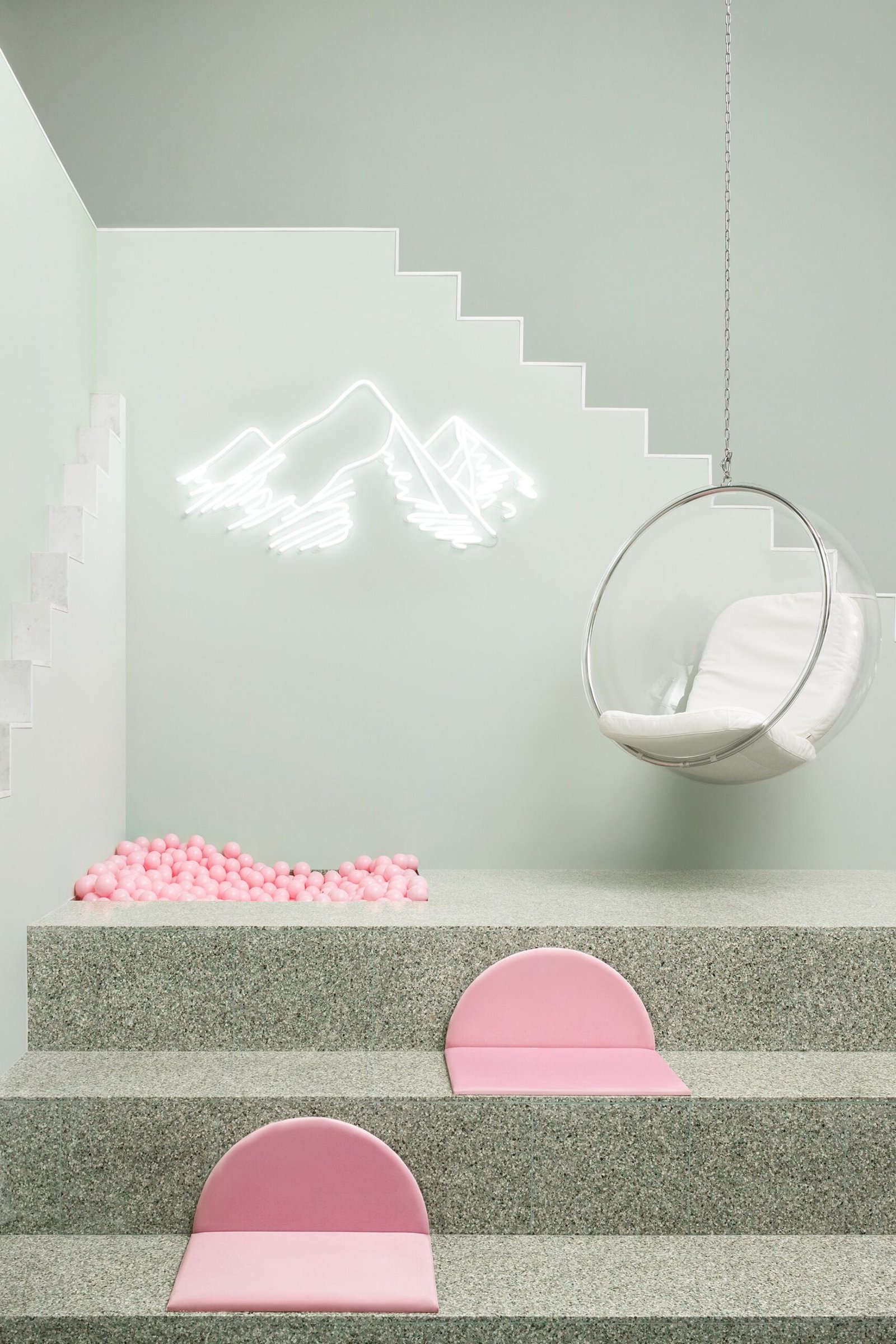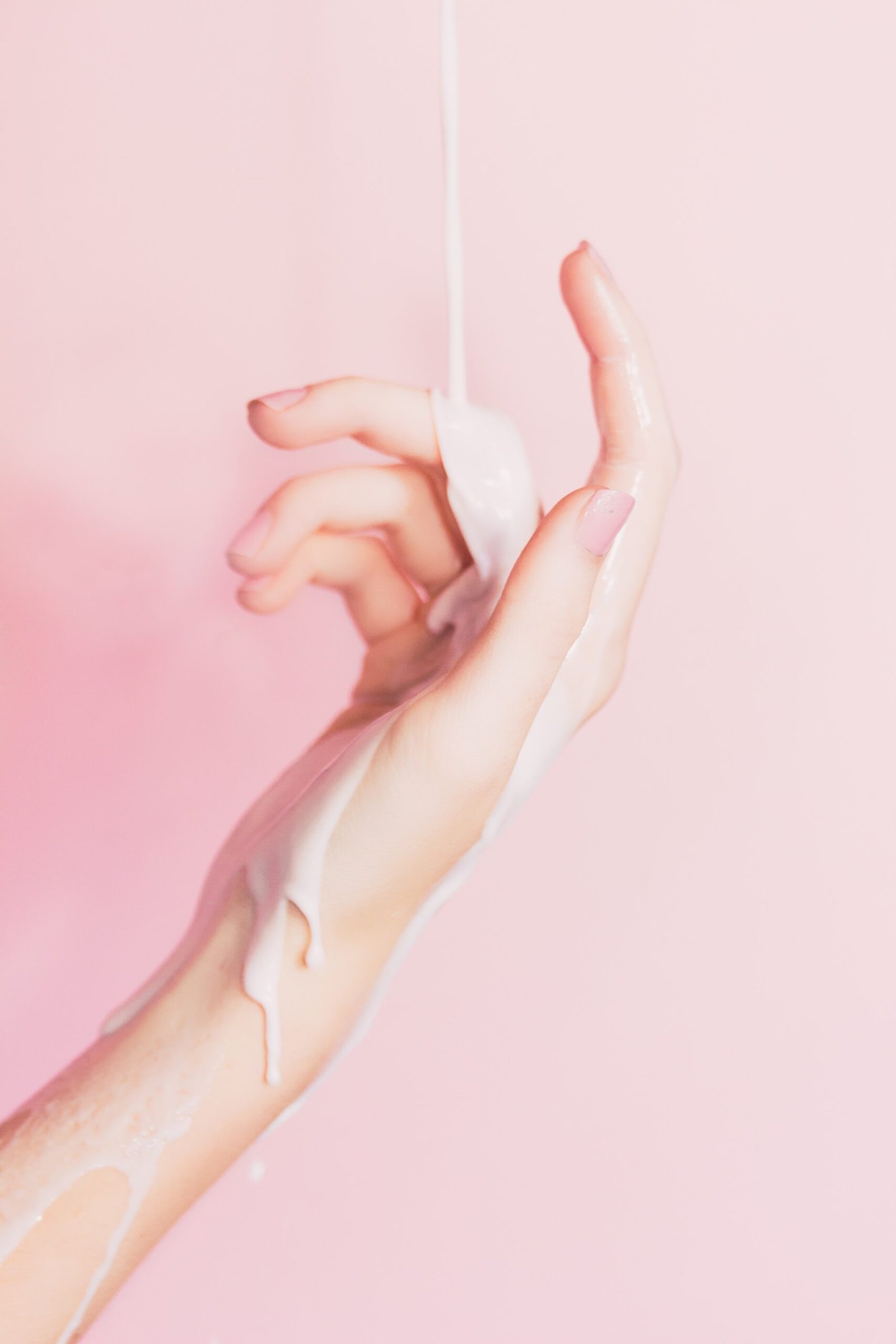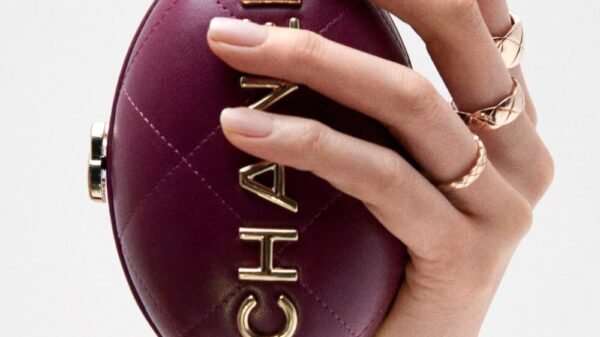Introduction to The Budapest Café Experience
Nestled in the bustling city of Chengdu, China, The Budapest Café offers an enchanting escape into a world reminiscent of a Wes Anderson film. From the moment visitors step through its doors, they are transported into a meticulously curated space that embodies the whimsical and symmetrical style for which Anderson is renowned. The café’s design pays homage to the director’s distinctive aesthetic, featuring pastel hues, geometric patterns, and quirky, vintage decor. This unique ambiance is not just visually appealing but also evokes a sense of nostalgia and warmth, making it an ideal retreat for coffee enthusiasts and design aficionados alike.
The Budapest Café’s interior is a masterful blend of form and function, where every detail has been thoughtfully crafted to create a cohesive and immersive experience. The seating arrangements, lighting, and even the tableware are carefully selected to complement the overall theme, ensuring that patrons feel as if they have stepped into a scene from “The Grand Budapest Hotel.” This attention to detail extends to the café’s menu, which features an array of delectable pastries and beverages that are as delightful to the taste buds as they are to the eyes. The presentation of each dish is in harmony with the café’s aesthetic, further enhancing the sensory experience.
In an industry where competition is fierce, The Budapest Café’s commitment to a well-curated aesthetic plays a crucial role in building customer loyalty. By offering more than just a place to enjoy coffee, the café creates memorable experiences that encourage repeat visits and word-of-mouth recommendations. The unique design not only sets it apart from other coffee shops but also serves as a powerful marketing tool, drawing in curious visitors eager to experience the magic of a Wes Anderson-inspired environment. This approach underscores the importance of creating a distinctive and engaging atmosphere in attracting and retaining customers in the competitive coffee shop market.
The Influence of Wes Anderson on Café Design
Wes Anderson’s distinctive cinematic style has significantly influenced the design of The Budapest Café in Chengdu, China. The café’s interior is a testament to the filmmaker’s unique aesthetic, characterized by his meticulous attention to detail and a penchant for creating visually striking environments. One of the most notable elements borrowed from Anderson’s films is the use of pastel hues. These soft, muted colors envelop the café, creating a soothing and nostalgic atmosphere that invites patrons to step into a whimsical, dream-like world.
In addition to the color palette, whimsical furniture plays a crucial role in bringing Wes Anderson’s vision to life within The Budapest Café. The eclectic mix of vintage and modern pieces, from plush, velvet chairs to quirky, retro tables, adds an element of surprise and delight to the space. This carefully curated selection of furniture not only enhances the visual appeal but also contributes to the overall storytelling aspect of the café, making each visit feel like a scene from one of Anderson’s films.
Another key influence from Wes Anderson’s films is the use of symmetrical one-point perspectives in the café’s design. This technique, often employed by Anderson to create a sense of order and harmony, is evident in the layout of The Budapest Café. The symmetrical arrangement of furniture and décor elements draws the eye to the center of the room, creating a balanced and aesthetically pleasing environment. This design choice not only pays homage to Anderson’s signature style but also enhances the immersive experience for visitors, making them feel as though they are part of a meticulously crafted cinematic world.
By incorporating these specific elements from Wes Anderson’s films, The Budapest Café in Chengdu offers a unique and immersive experience for its patrons. The pastel hues, whimsical furniture, and symmetrical one-point perspectives work together to create an enchanting environment that transports visitors into a Wes Anderson dreamscape.
Architecture and Interior Design: A Symmetrical Wonderland
The Budapest Café in Chengdu, China, is an architectural marvel that meticulously captures the essence of Wes Anderson’s distinctive cinematic style. As patrons step into this whimsical haven, they are immediately enveloped by an ambiance that echoes the filmmaker’s penchant for symmetry and meticulous detail. The café’s design is a harmonious blend of classical and contemporary elements, creating a space that feels timeless yet modern.
A series of gracefully curved arches and archways dominate the interior, serving as both structural and decorative elements. These arches are a nod to Anderson’s iconic visual style, where symmetry and repetition play pivotal roles in storytelling. The arches guide the eye and create a sense of continuity throughout the space, drawing patrons deeper into this dreamlike environment. Each archway frames a new perspective, inviting guests to explore further and discover the many nuances of the café’s design.
The attention to detail is evident in every corner of The Budapest Café. From the intricate moldings and ornate ceiling designs to the carefully selected furnishings and color palette, no element has been overlooked. The pastel hues and rich textures evoke a sense of nostalgia, reminiscent of Anderson’s film sets. The furniture, a mix of vintage and bespoke pieces, adds to the eclectic charm, ensuring that each seating area offers a unique experience.
Lighting plays a crucial role in enhancing the café’s atmosphere. Soft, ambient lighting casts a warm glow, highlighting the architectural features and creating intimate spaces within the larger setting. Chandeliers and sconces, chosen for their aesthetic and functional qualities, add a touch of elegance and further emphasize the café’s commitment to design excellence.
In essence, The Budapest Café is not merely a place to enjoy a cup of coffee; it is an immersive experience that transports visitors into a Wes Anderson dreamscape. The architectural and interior design elements work in concert to create a space that is both visually stunning and emotionally evocative, making it a must-visit destination for fans and design enthusiasts alike.
The Role of Aesthetics in Modern Coffee Shops
In the contemporary coffee culture, the significance of aesthetics in coffee shops has transcended mere visual appeal to become a cornerstone of success. In an era where social media platforms like Instagram and Pinterest dominate, a visually captivating environment can significantly enhance the overall coffee-drinking experience. Modern coffee shops, such as the Budapest Café in Chengdu, China, are exemplary in showcasing how meticulous design and thoughtful decor can draw a crowd, not just for the coffee but for the ambiance itself.
Aesthetic appeal in coffee shops plays a pivotal role in creating a memorable and immersive experience. Elements such as color schemes, furniture design, lighting, and thematic decor are meticulously curated to create a cohesive and inviting atmosphere. These design choices are not just about superficial beauty; they cater to the sensory experiences of patrons, making the space more enjoyable and comfortable. A well-designed coffee shop can evoke feelings of warmth, relaxation, and even nostalgia, which can enhance the overall enjoyment of a cup of coffee.
Moreover, the rise of social media has amplified the importance of visual aesthetics. Coffee shops with unique and photogenic interiors are more likely to be shared by customers on various social platforms, effectively serving as free advertising. This phenomenon has led to a trend where coffee shops are designed with ‘Instagrammable’ corners, aiming to provide patrons with perfect backdrops for their photos. The Budapest Café, with its whimsical and Wes Anderson-inspired design, is a prime example of a space that not only serves excellent coffee but also offers a visual feast for its visitors.
In conclusion, the integration of compelling aesthetics in modern coffee shops is a strategic approach to enhance customer experience and attract a broader audience. By creating an environment that is both visually stunning and comfortable, coffee shops can distinguish themselves in a competitive market, ensuring that customers keep coming back for both the ambiance and the beverages. The success of aesthetically driven coffee shops like the Budapest Café underscores the importance of design in shaping the modern coffee culture.
The Budapest Café in Chengdu, China, has garnered international attention for its whimsical and meticulously curated design, earning a prominent feature in Lani Kingston’s esteemed coffee table book, Designing Coffee: New Coffee Places and Branding. This visually captivating book delves into the intricate world of café culture, showcasing a plethora of photogenic and eccentric coffee establishments from around the globe.
Kingston’s book is a celebration of innovative coffee shop designs and the distinctive branding that sets them apart in a competitive market. By highlighting spaces like The Budapest Café, it underscores the importance of aesthetic appeal and unique ambiance in creating memorable customer experiences. The café, with its pastel palette and playful, Wes Anderson-inspired interior, epitomizes the kind of creativity and attention to detail that Kingston’s book aims to spotlight.
Throughout its pages, Designing Coffee takes readers on a visual journey, presenting a curated selection of cafés and roasters that not only serve excellent coffee but also offer an extraordinary visual and sensory experience. The Budapest Café stands out among these featured establishments due to its striking design, which combines elements of fantasy and nostalgia to create an immersive environment. This blend of style and substance is what makes the café a perfect fit for Kingston’s compilation.
By featuring The Budapest Café, Kingston’s book emphasizes the growing trend of coffee shops as not just places to enjoy a cup of coffee but as destinations that offer a unique and memorable setting. This focus on design and branding reflects a broader movement within the industry, where the visual and experiential aspects of a café are as crucial as the quality of the coffee itself. As such, Designing Coffee serves as both an inspiration and a guide for those looking to explore or create their own extraordinary coffee spaces.
Meet the Author: Lani Kingston
Lani Kingston is a distinguished figure in the world of coffee, admired for her extensive knowledge and contributions to the industry. As a seasoned coffee expert and an acclaimed author, she has carved a niche for herself through her profound understanding of coffee’s cultural, historical, and technical aspects. Kingston’s passion for coffee is not just confined to the art of brewing; it extends to an in-depth exploration of the social and cultural dimensions that coffee encompasses globally. This holistic approach is vividly reflected in her writings and academic endeavors.
Lani Kingston’s academic journey is as impressive as her professional one. She is the creator and instructor of the course ‘The Anthropology of Coffee’ at Portland State University. This course is a testament to her commitment to educating others about the intricate relationship between coffee, culture, and society. Through this curriculum, Kingston delves into the historical origins of coffee, its role in various cultures, and the socio-economic implications of the coffee trade. Her academic work not only enriches students’ understanding but also inspires a deeper appreciation for this ubiquitous beverage.
In addition to her academic pursuits, Kingston is known for her expertise in café design. She has a keen eye for creating spaces that are not only aesthetically pleasing but also functionally efficient and welcoming. Her insights into café design are informed by her extensive travels and experiences across different coffee cultures. This unique blend of practical knowledge and cultural sensitivity enables her to craft environments that enhance the overall coffee-drinking experience. Whether through her writings, teachings, or design projects, Lani Kingston continues to influence and shape the coffee industry with her innovative perspectives and unwavering passion.
The Evolution of Coffee Shop Aesthetics
In recent years, the landscape of coffee shop design has undergone a significant transformation. What was once a functional space solely for the purpose of drinking coffee has evolved into aesthetically captivating environments that are as much about the experience as they are about the beverages. This shift can be largely attributed to the growing emphasis on visual appeal, which has become a cornerstone of modern coffee shop aesthetics.
The contemporary coffee shop is now a canvas for creativity, where interior designers and café owners collaborate to create spaces that not only serve coffee but also offer a sensory experience. This evolution has seen the rise of thematic designs, unique furniture, and eclectic decor that often draw inspiration from various cultural and artistic influences. These visually stunning coffee shops are designed to evoke emotions, tell stories, and provide a memorable atmosphere for their patrons.
Social media has played a pivotal role in the popularization of these aesthetically pleasing coffee shops. Platforms like Instagram and Pinterest have become virtual galleries where users share their experiences and discoveries. The ‘Instagrammable’ quality of a coffee shop can significantly impact its popularity and customer footfall. A well-designed space that photographs well can quickly become a trending topic, attracting visitors eager to capture and share their own experiences. This phenomenon has led to a competitive landscape where coffee shops are continually innovating to stand out and offer something visually unique.
Moreover, the emphasis on aesthetics extends beyond just the interior design. It encompasses the presentation of food and beverages, the quality of service, and even the branding and marketing strategies. Coffee shops are not just selling a product; they are curating an experience that resonates with their customers on multiple levels. This holistic approach to design and presentation enhances customer perceptions and contributes to the overall success of the establishment.
In conclusion, the evolution of coffee shop aesthetics signifies a broader trend towards experiential consumption, where the visual and emotional appeal of a space plays a crucial role in shaping customer experiences and perceptions. As this trend continues to grow, we can expect to see even more innovative and visually captivating coffee shops emerging around the world.
Are These the Most Beautiful Coffee Shops in the World?
The Budapest Café in Chengdu, China stands as a testament to the power of design and ambiance in enhancing the coffee experience. Its whimsical interiors, reminiscent of a Wes Anderson dream, transport visitors into a world where every detail is meticulously crafted to evoke a sense of wonder and nostalgia. This café, along with others featured in Kingston’s book, offers not just a place to enjoy a cup of coffee, but a destination where the aesthetics themselves become an integral part of the experience.
These coffee shops, with their unique designs and captivating atmospheres, certainly set a high standard for beauty and creativity. From the pastel hues and geometric patterns of The Budapest Café to the rustic charm of other establishments across the globe, each venue tells its own story, inviting patrons to become a part of its narrative. Such spaces encourage visitors to linger, to savor not just their beverages but also the artistry that surrounds them.
Whether these cafés are the most beautiful in the world is subjective and depends on individual tastes. However, what is undeniable is their ability to create memorable experiences that go beyond the ordinary. They serve as sanctuaries where people can escape the hustle and bustle of daily life, if only for a moment, and immerse themselves in an environment that delights the senses.
We encourage readers to visit these unique coffee shops and experience their charm firsthand. There is something incredibly special about discovering a café that resonates with you on a personal level, where the ambiance is as rich as the coffee itself. If you have visited any aesthetically pleasing coffee shops or have personal favorites, we invite you to share your experiences. Your stories and recommendations could inspire others to seek out these beautiful havens, adding their own chapters to the ever-growing tale of extraordinary coffee shops around the world.










